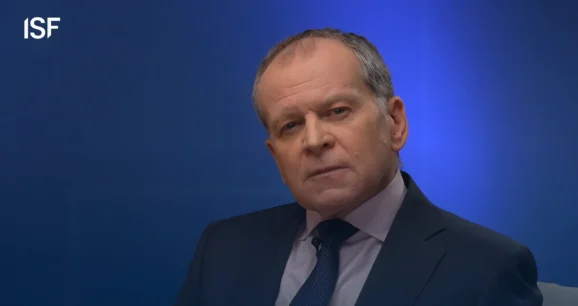Momentum is Key to Brand Success

Tony Lewis, founder and CEO of strategic market research consultancy Vision One, reveals a new way of thinking about growth from a customer perspective and why Brand Momentum is the key metric every company must monitor to gauge success.
By Tony Lewis
Working for an award-winning international research agency I established over 25 years ago, Vision One, has offered a privileged perspective. It has provided so many insights through unique opportunities to talk with business leaders and consumers alike.
This access has allowed us to explore business growth from both perspectives and to discover what companies want and how brands grow.
All businesses strive for growth, but they will all use different measures of success. For the past seven years, we’ve been looking for ways to understand brand growth that are easy to understand, effortless to measure, and simple to implement.
My research and background have also given me access to leading industry research and insights about brands, consumers, and growth, which has undoubtedly shaped my thinking and helped to create a new metric derived from consumer research called ‘Brand Momentum’.
It is based on two questions and captures whether consumers think a brand is growing or declining. Whilst the questioning is simple, the answers are compelling. Let me explain…
We help businesses track their performance through consumer surveys, seeking to understand their behaviour, choices and how customers perceive brands. These surveys are typically conducted annually and sometimes more regularly, to explore how customer behaviours and perceptions change over time.
Through these changes, we can start to see which questions (metrics) are influential and related to brand performance and success.
The momentum story started about eight years ago; when developing a brand measurement system called ‘BrandVision’, we made a discovery that radically transformed our thinking about brands.
We found that Monarch Airlines had a woeful score on our Brand Velocity Score (BVS). Some six months later, the sad but unsurprising news headlines told us that the business had gone into administration.
This left us wondering if we had stumbled upon something that could predict the future – something no other metric could do.
This has since been the focus of my research, and the book exploring the new metric, The Momentum Factory, is launching later this year. It’s a measure that looks at both the size and velocity of a brand, and where the true power of growth comes from.
Incidentally, the same thing happened very recently. We were conducting a momentum study in the UK and the US and discovered that The Body Shop, the international skincare and cosmetics retailer, scored very poorly on momentum. Months later, on 13th February this year, the business sadly also went into administration, as we had anticipated.
The important thing here is that it is possible to use the public to ascertain the future of a brand. This would not be possible if you looked at other established measures, such as brand awareness, consideration, and loyalty, which do not indicate the direction a brand is heading.
In today’s world, where sustainability and the planet are so important, many people would have thought the demise of The Body Shop would have been highly improbable.
This unique predictive power is just one of the benefits of the measurement, which can determine the future outcomes – good or bad – for brands.
It is also associated with other important aspects, such as increased loyalty. Research shows that consumers are attracted to growing brands and deterred from declining brands.
Growing brands are also associated with perceptions of popularity and success, along with a willingness to pay more for them, and as more attractive places to work or in which to buy shares. The power of momentum is mighty indeed and understanding it can help businesses thrive and develop new consumer-based strategies to grow their brands.
Momentum has a dual effect on a brand. On one hand, it helps with acceleration during the early growth phase. Most marketing effects are short-lived, but some brand-building campaigns have a longer-term impact. We’ve discovered that specific brand image attributes can improve your overall image and help it grow – and the good news is that the bigger a brand gets, the more efficient the advertising.
Whilst growth is a vital part of momentum, it also has the effect of prolonging the life of a brand. I like to use the analogy of a large moving object. It can take a fully loaded Supertanker at sea around 15-20 minutes (or six miles) to come to a stop. They turn off their engines 25km before they reach their destination. This highlights the importance of an object’s size and speed, which is the same for brands; those with the highest momentum include many of the world’s most iconic brands (e.g. Google, Coca-Cola), not just the fastest growing. Maintaining your momentum keeps you in line for long-term success and short-term gains.
Even though brand momentum is in the consumer’s mind, it shouldn’t be underestimated, as it dictates how your brand is perceived and can predict how it will perform.
Getting the right measures in place is the first step, allowing you to understand where you are and to benchmark your brands against competitors.
From there, it’s about building a momentum-based strategy that will grow and sustain your brand.
Momentum isn’t just about outward growth; it’s a philosophy that puts the customer at the heart, focuses on emotion, and radiates energy throughout its practices, marketing, and customer connections.
For more information about Brand Momentum, visit www.visionone.co.uk.
Q&A Interview with Tony Lewis
Brand momentum pioneer Tony Lewis has demystified the secrets to sustained brand growth. By reading The Momentum Factory, business leaders can unlock the power of momentum and see their brands soar. We spoke to him to find out more.

Q. How can Brand Momentum transform the strategies of CMOs and CEOs?
A. In recent years, our analysis has shown that the rise and fall of certain brands can often be explained by public opinion, simply from whether a brand is seen to be growing or falling. Our studies have allowed us to understand the power of this new metric we refer to as ‘Brand Momentum’. Momentum can be used to predict and shape brand performance, and it offers an exciting new way to build brand growth.
We have found that the brands with momentum have energy, dynamism, and youthful spirit cut through to existing and potential customers. This perceived energy is vital for growth and applies equally to start-ups and huge heritage businesses.
In a nutshell, momentum helps brands in two ways:
- From a growth perspective, it helps attract new customers to the brand and ensures that it achieves more sustained growth with greater efficiency.
- From a longevity point of view, brands with momentum will remain around for longer, have higher loyalty, and hold off on competitive threats.
A momentum-based strategy is based on a metric we refer to as the ‘Brand Velocity Score’ (BVS™), which calculates the velocity (or energy) of a brand and measures the perceived level of growth or decline amongst consumers. It’s simple to understand and measure and armed with this metric, CEOs and CMOs have a new KPI on which to build their brand. It simplifies the marketing and strategic focus because it aligns all activities around getting this single metric as high as possible and above that of your competitors.
Q. What are the practical applications of Brand Momentum for brand managers and marketers?
A. Brand Momentum (incorporating our new measure the Brand Velocity Score – BVS) gives marketers a single measure to help them create and sustain brand performance.
Again, it’s all about aligning marketing efforts around a singular focus that unites the business and defines success. It means evaluating your current marketing in terms of its contribution to the BVS – the customer communications, advertising campaigns, PR, social media etc., all focused on the common goal of creating this positive energy for the brand. Being a customer-centric organisation is at the heart of building momentum. It’s worth remembering that brands and momentum are in the customer’s mind – it doesn’t really matter what you do, only what customers think you are doing.
In essence, for marketers, the more your activities are aligned to the central goal of creating brand momentum, the better the results for your brands and value from your marketing spend.
Q. How can entrepreneurs and small businesses implement Brand Momentum for growth?
A. A momentum strategy for start-ups and small businesses differs from that needed for mature brands, but it’s mainly a question of scale. The aim is to create energy and excitement in the brand from inception and to maintain this energy for as long as possible.
Some start-ups mistakenly try to skip the introduction (or launch) phase; rather than focusing on its newness and novelty, they attempt to convey something that’s trusted and familiar instead. This misguided thinking rarely works; bypassing this step robs your brand of exploiting its energy during the introduction phase. Remember, perceptions of brand ‘Vitality’ – one of three signals of momentum imbuing energy, enthusiasm, and excitement – is highly attractive and will encourage people to buy. So go out, make a splash, and be proud to be new and exciting!
Slightly more established, smaller businesses tend to lose their impetus and may need to re-inject some vitality to keep their brand moving.
Q. Why are you confident that your Brand Momentum metric is reliable for predicting and navigating a brand’s growth?
A. At Vision One Research, we have been working with hundreds of companies and tracking many of their brands. This experience allows us to understand how brands behave across different sectors and industries. We have analysed our data and conducted dedicated research to test our observations and hypotheses, and this is an ongoing process.
In a nutshell, the evidence we have seen demonstrates:
- Brand Momentum has been good at predicting brand failures before they happen. It was the collapse into administration of Monarch Airlines in 2017 that first alerted us to the potential predictive nature of this metric, as we had recorded a very low brand velocity score a year earlier. Last year, we spotted that The Body Shop, once an iconic skincare and cosmetics chain, needed to show stronger momentum. Sadly, the recent news that they too have gone into administration, did not come as a surprise.
- Brands with high momentum continue to grow for years into the future (those with low momentum continue to decline), indicating that momentum is the only measure that we know, to have these predictive qualities.
- High momentum-scoring brands are seen to possess some great qualities – and they can be new or much older brands. Indeed, Google is one of the highest-scoring brands we’ve tested to date. Brands with high Brand Velocity scores tend to have solid social appeal (popular, fashionable), they tend to be younger (enthusiastic, energetic, and exciting), and people seem willing to pay more for them. They also tend to have high loyalty.
Q. Why do you think that Brand Momentum is the key marketing metric?
A. In the field of marketing and market research, Brand Momentum (measured by the Brand Velocity Score – BVS) is the most exciting and powerful new consumer metric for brand building that has been introduced for decades. Everyone strives for brand awareness – but understanding current awareness doesn’t predict future sales or performance. The revolutionary Net Promoter Score (NPS) was developed 20-odd years ago by Fred Reichheld. It certainly made waves, and in some ways, there are some similarities. However, NPS is really for customer experiences, whereas BVS, our new metric, is aligned with growth and is for marketers who are looking to create and sustain brand performance.
Momentum is more predictive than any other metric because it is more closely aligned to growth. Very little indeed has been written or researched on the subject. I have searched but have only found scant references. I know other agencies have looked at it – but perhaps not in quite the same way as I have. Hopefully, I will reignite their interest in what is undoubtedly pure gold to anyone who fully grasps what this metric is and does.
The feedback and interest I’ve started receiving about the book from marketing experts and some of our clients to date has been very encouraging, but I fully expect to be challenged along the way. I look forward to working with anyone interested in furthering the momentum story.
Q. What can you tell us about your forthcoming book, The Momentum Factory?
A. The working title for the book is ‘The Momentum Factory’ because it outlines the ideas and processes for measuring, creating, and producing Brand Momentum.
The book is based on the research I have been doing for the past eight years and more recent investigations into growing and declining brands. In addition, The Momentum Factory also builds on the latest research from marketing and research experts, exploring the impact of growth from around the world. I also wanted to share and explain many of the exciting things I have learned about brand success over the years and the ‘eureka’ discovery of the link to momentum. Writing the book and explaining the concept to others has helped refine the measures and find the models to bring it to life.
The first draft of the book is now complete, and I aim to publish it before the end of the year.
Q. You have just launched a new company, Vision X, based on Brand Momentum. What do you see it offering businesses, and what are you most excited about?
A. Vision X is a brand consultancy that specialises in Brand Momentum, helping brands improve their branding strategies and marketing effectiveness through long-term brand-building and the creation of momentum. We will provide training and consulting to help brands maximise this new model, driven by science and research discoveries from a wide range of disciplines, including marketing, psychology, neuroscience, business studies, and marketing research.
Q. How does The Momentum Factory complement Vision X?
A. Vision X is really the living book. I’m hoping that everyone will be able to follow what I’ve written and implement the ideas I have outlined. In some cases, however, this may not be easy to do. Understanding the drivers of momentum in each market may need some assistance. Likewise, identifying and fine-tuning an appropriate strategy and marketing programme may also need some support. I hope through Vision X we can help anyone who wants to learn more and follow a momentum strategy.














